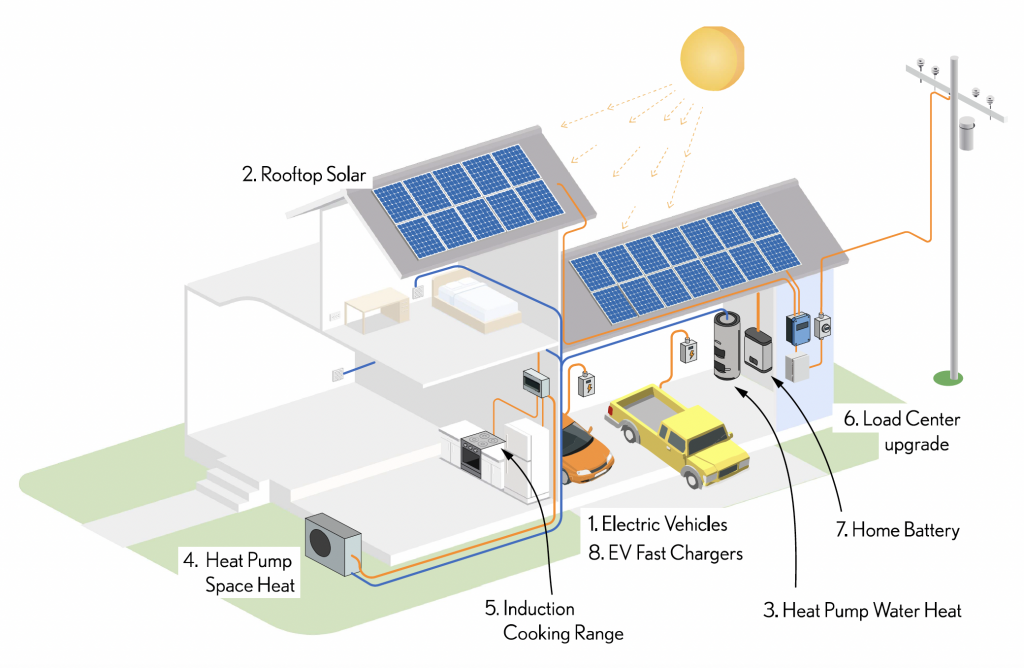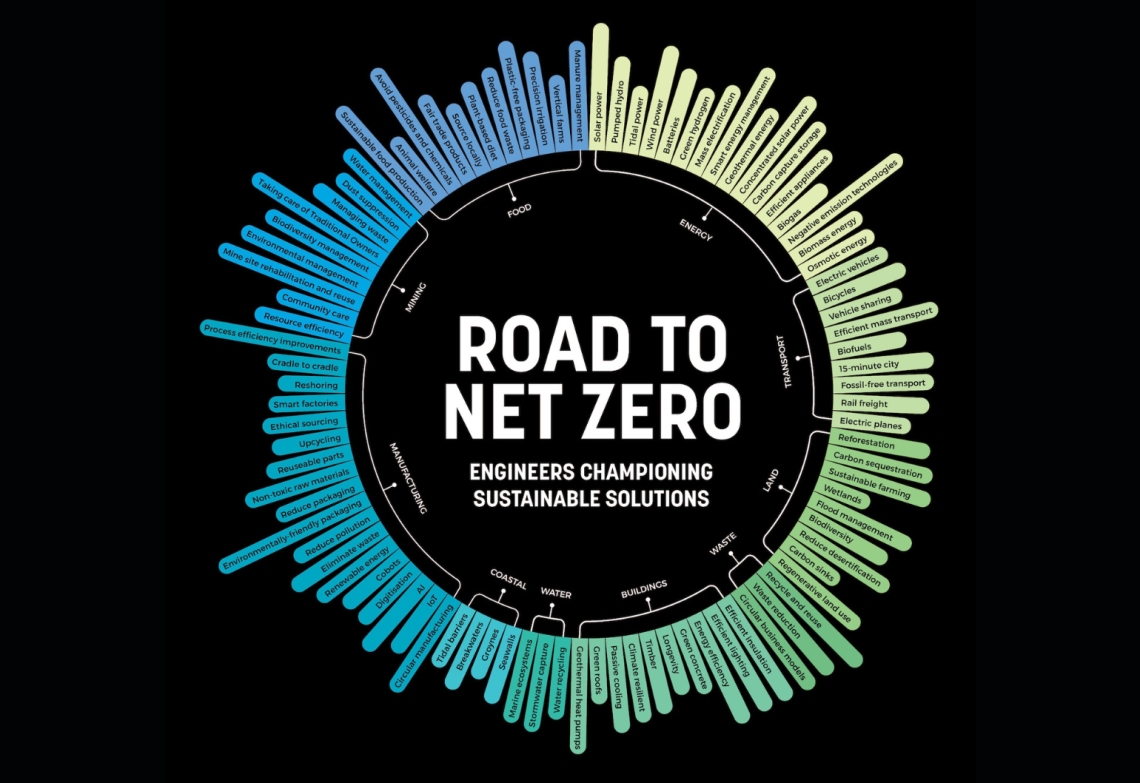Climate change is an extraordinary problem, believes engineer Saul Griffith. He wants a solution that will remake our lives for the better.
Electrify everything.
In two words, that’s Dr Saul Griffith’s plan to solve the climate crisis. The Australian-born engineer and inventor has spent the past two decades in the US, spinning out companies, attracting millions of dollars in capital, and pioneering sustainable technology at his San Francisco workshop Otherlab. He conducted a broad analysis of the US energy economy for the country’s Department of Energy and then went on to advise the administration of President Joe Biden on its climate change plans.
Growing up in the Sydney suburb of Bardwell Park and earning engineering degrees from the University of New South Wales and the University of Sydney, Griffith worked in the steel and smelting industries before moving to the US to study for a PhD at the Massachusetts Institute of Technology (MIT).
He earned his doctorate in 2004 and was awarded a Macarthur “genius” grant in 2007. New South Wales Treasurer Matt Kean echoed the designation, describing him as “basically a genius”. One of his MIT professors, Shuguang Zhang, described him to the Washington Post as an “unconventional thinker, full of world-changing ideas”. A 2010 New Yorker article quoted another former professor, Neil Gershenfeld, who called him “an invention engine.”
Now, Griffith has returned to Australia, and he wants the country to be at the forefront of his plans to transform the energy landscape to one powered by renewable electricity.
“We have the opportunity to in fact lead the world,” he says. “I actually think we could turn around 25 years of being the world’s worst agent at the [Intergovernmental Panel on Climate Change] and become the lighthouse — the demonstration of ‘look, it works, it improves people’s lives.’”
A group he founded in 2021, Rewiring Australia, collaborated with think tank the Australia Institute and analyst Josh Ellison to produce a technical study Castles and Cars.
The research models the electrification of all Australian household appliances, heating and electric vehicles, which would be powered by zero-emissions electricity. It pursues a “100 per cent clean replacement rate” — using financial incentives to ensure that every time a household replaces a non-electrical appliance or vehicle, it adopts an electric one in its place.
The research finds that the energy use of an average household would go from a current figure of 102 kWh per day to 37 kWh per day in a fully electrified environment. This would see that household’s 11,000 kg of annual carbon dioxide equivalent energy emissions drop to zero.
“You could supply nearly everyone in the world with an improved quality of life, do it with zero emissions, and do it on time to beat a two-degree target,” Griffith says.
“We just need to focus the mind on that, and build the policies and the technologies for that, and stop getting distracted.”
Uptake on solar
For Engineers Australia CEO Dr Bronwyn Evans, transforming the electricity sector is vital.
“Not only is the current electricity grid our biggest emitter, but much of our economy — from transport to heating and heavy industry — will need to switch to electric energy to reduce emissions,” she says.
“That shift will only succeed with a larger, zero emissions power network.”
Co-Chair of Engineers Australia’s Electrical College Nee Nee Ong FIEAust CPEng believes a lot of people are currently open to ideas such as Griffith’s.
“There’s such a big uptake of renewable energy at the moment, and it’s great to see that individuals are being concerned and wanting to make an impact,” she tells create.
“They see how they can actually do it in a more local, cost effective, sustainable type of way, and [so] we see a lot of rooftop solar, renewable energy happening.”
Griffith and Ong both see Australia’s embrace of roof-top solar power as evidence that a more dramatic transformation of the energy economy is feasible.

“I think the change has been quite rapid, especially since the cost of the actual panels itself has reduced significantly, and a lot of places are actually looking at putting in batteries at the moment as well,” Ong says.
“It’s come along quite a lot recently, I would say, and that’s been a positive sign. It just shows you what the market can do and what the government can do.”
Griffith agrees that regulatory choices in Australia have helped the solar take-up here.
“We’ve had more personal experience of the downside of climate, and we’ve had more personal experience of the upside of electrification because one third of Australian households have solar on their roof that’s producing cheaper electricity than the grid can provide,” he says.
Electrifying the future
For mass electrification to work, Ong cautions, Australia will need to embrace technological and policy changes.
“I think, while Saul and others are looking at it from an overview perspective — and it’s a good education and selling point to the general community and the society — there still needs to be a lot of work behind the scenes from the engineers in terms of the technology side of it, to ensure that it’s a robust way forward,” she says.
“We’re changing basically from a generating energy model to a disparate model, which means there’s issues with back feeding, back into the grid and things like this. So, that really needs to be addressed.”
Griffith is confident, however, that the grid can be brought up to speed.
“There is enormous overhead in the existing grid,” he says.
“The distribution transformers are only operating at about 30 per cent of the capacity. The total amount of kilowatts you can deliver to an individual house in Australia is 10 to 20. The total average year-round low — 24 hours a day, seven days a week — is 3 to 4 kW for an average Australian house. So you can see there’s a lot of headroom in the distribution grid.”
That will mean upgrades, he says, but these can be made.
“Yes, there will need to be a few upgrades in that distribution system. Yes, we will need more transmission, but largely to connect new and large renewable things. Can we do that in the next decade? Absolutely, and it could be a nation-building project,” he says.
In Griffith’s view the end goal is worth the effort now.
“By about 2024, if you [consumer] can finance the upfront cost, it’s going to be cheaper to own and to operate all electrical things. So there’s a small period now where, if the government was subsidising it, we’d be building capacity, we’d be training tradies so they can do the jobs, and then we would be poised to go the fastest at hitting our climate goals and in saving money for households.”



